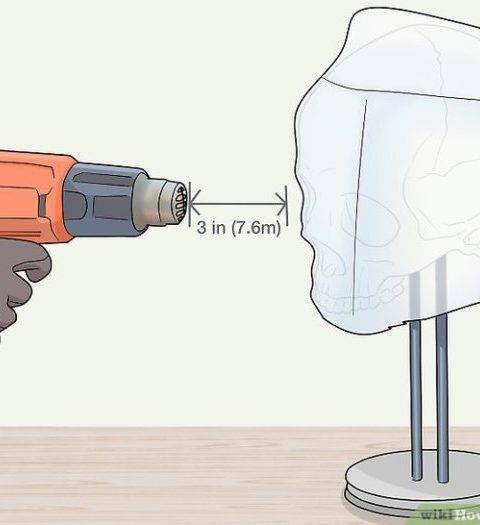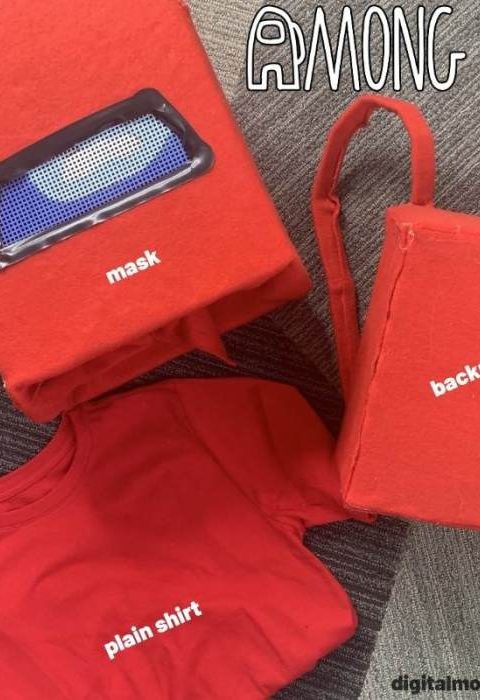Creating the Gnome Body and Outfit: Lawn Gnome Costume Diy

Lawn gnome costume diy – Crafting a comfortable and charming gnome costume involves thoughtful fabric selection and clever styling. We’ll explore creating a body that’s both visually appealing and allows for ease of movement, and then delve into outfit options that bring your gnome to life. Remember, the key is to have fun and let your creativity shine!
The foundation of your gnome costume lies in its body. For a comfortable and breathable base, consider using a soft, stretchy fabric like fleece or a cotton blend. These materials are readily available, easy to work with, and will keep you comfortable throughout your gnome-ly adventures. A simple, oversized tunic shape is ideal, providing ample room for movement and allowing for easy embellishment.
The length should fall around mid-thigh for a classic gnome silhouette. For added warmth and comfort, especially during cooler weather, consider layering a thin thermal undershirt underneath.
Gnome Body Construction
Constructing the gnome body is a straightforward process. Begin by measuring your torso from shoulder to mid-thigh, and across your widest point at the chest. Use these measurements to cut two identical tunic pieces from your chosen fabric. Sew the side seams together, leaving an opening for your head and arms. Hem the bottom and sleeves for a neat finish.
To enhance the comfort, consider adding elastic to the sleeve cuffs and/or the bottom hem for a snug, yet flexible fit. This will prevent the fabric from riding up or feeling too loose.
So you’re crafting a lawn gnome costume? Brilliant! Need some inspiration for miniature accessories? Check out these fantastic diy barbie costume ideas – perfect for scaling down to gnome-sized proportions! Think tiny pink dresses and sparkly shoes for your little garden buddy. Then, once you’ve mastered miniature fashion, you’ll be a lawn gnome costume DIY superstar!
Styling the Gnome Outfit: Color Schemes and Patterns
The color palette you choose significantly impacts the overall aesthetic of your gnome costume. Traditional gnome costumes often feature earthy tones like deep reds, greens, and browns. However, feel free to experiment! A vibrant teal and orange combination could create a whimsical, modern gnome. Consider incorporating patterns like stripes, plaids, or even a whimsical floral print to add personality.
Remember, the possibilities are endless! For example, a rustic gnome might wear a brown and beige plaid tunic, while a playful garden gnome could sport a bright green tunic with polka dots.
Adding Details to Enhance the Costume
Adding small details elevates a simple tunic into a truly captivating gnome costume. Buttons, stitching, and patches can transform a plain garment into a unique piece of wearable art. Consider adding wooden buttons down the front of the tunic, mimicking the look of traditional clothing. A simple running stitch around the neckline and cuffs adds a touch of rustic charm.
Patches, especially those featuring whimsical images like mushrooms, flowers, or gnomes themselves, are a fantastic way to personalize your costume. For a more textured look, consider adding faux fur trim around the neckline or cuffs. This provides a tactile element and visually enhances the costume’s appeal. For example, a small, embroidered mushroom patch on the chest or a stitched-on felt flower applique adds character and visual interest.
Designing the Gnome Beard and Face

Crafting a truly captivating gnome requires meticulous attention to detail, and the beard and face are paramount in achieving that whimsical charm. The right beard can transform your lawn gnome costume from simply cute to undeniably enchanting, while a well-executed face brings your creation to life. Let’s explore the various techniques for bringing these elements to fruition.
Beard Creation Techniques
The choice of material for your gnome’s beard significantly impacts its overall look and feel. Each option offers unique advantages, allowing you to tailor the beard to your desired aesthetic. Consider the following options and their respective benefits: Using yarn provides a textured, slightly unkempt look, perfect for a rustic gnome. Felt offers a more structured and easily manipulated material, ideal for creating a neatly groomed beard.
Faux fur lends a luxurious, plush quality, best suited for a more opulent or whimsical gnome.
Beard Attachment Methods, Lawn gnome costume diy
Securely attaching the beard is crucial to prevent it from shifting or falling during wear. Several reliable methods ensure a long-lasting, comfortable attachment. For yarn beards, consider carefully gluing individual strands to the costume’s hood or face. This meticulous approach allows for greater control over the beard’s shape and density. Felt beards can be sewn directly onto the costume, offering a secure and permanent attachment.
Faux fur beards, due to their thickness and potential weight, may benefit from a combination of sewing and adhesive, ensuring both durability and a natural drape. Remember to use a strong, flexible adhesive suitable for fabrics to avoid damaging the costume.
Facial Feature Application
The gnome’s facial features are the key to its personality. Whether aiming for a friendly, mischievous, or wise expression, careful application of features is essential. Acrylic paints offer excellent control and vibrant color, allowing for detailed features. Begin by sketching the desired features lightly with a pencil before applying the paint. Use thin brushes for precise detailing and allow each layer to dry completely before applying the next.
Alternatively, felt cutouts can be used to create simple, yet effective features. This method is ideal for achieving a more cartoonish or whimsical look. Attach the felt pieces using fabric glue or small stitches. Consider using a sealant to protect the paint or felt from moisture and wear.
Popular Questions
How long does it take to make a lawn gnome costume?
The time required varies depending on your skill level and the complexity of your design. A simple costume could take a few hours, while a more elaborate one might require a day or two.
Can I use recycled materials for my lawn gnome costume?
Absolutely! Repurposing items like old sweaters, felt scraps, and cardboard is a great way to create a unique and eco-friendly costume.
What age range is this costume suitable for?
This guide provides techniques adaptable for various ages. Adult supervision is recommended for younger children, particularly when using sharp objects or hot glue.
Where can I find inspiration for my gnome’s personality?
Browse online images of gnomes, visit garden centers, or even draw inspiration from classic fairy tales for ideas on your gnome’s character.




